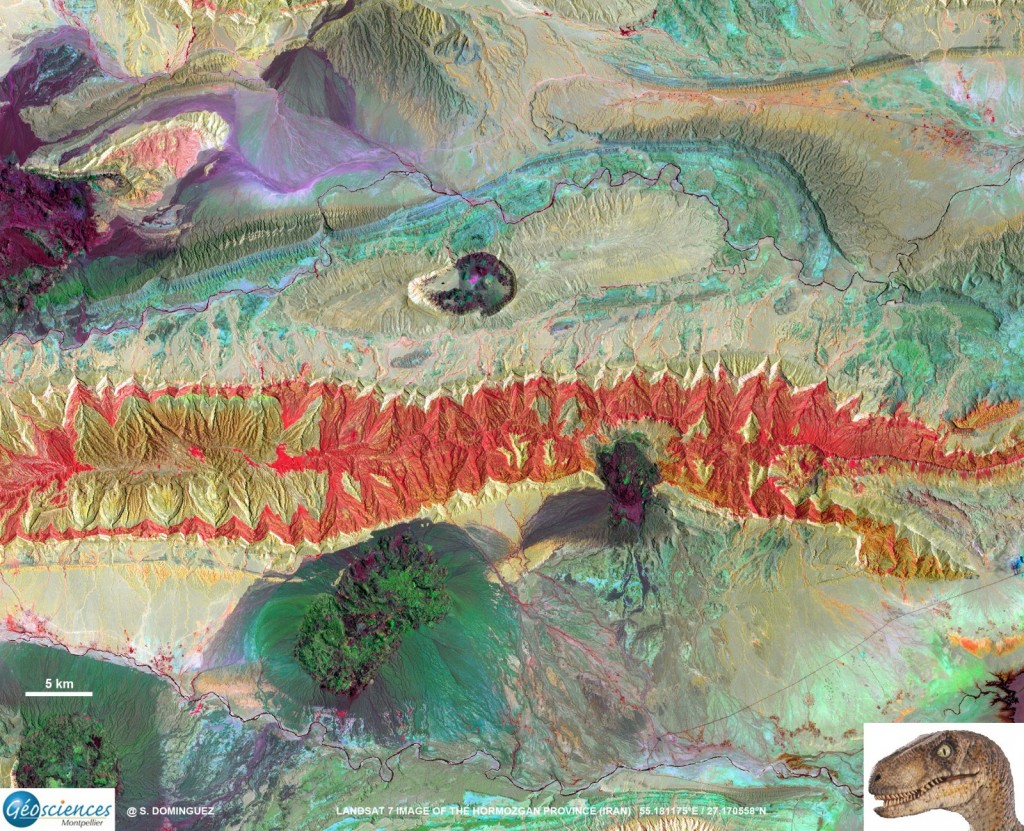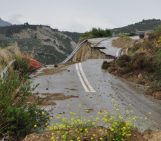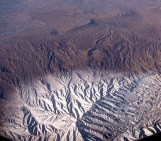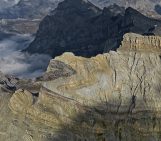
A velociraptor in the Zagros fold and thrust belt. Credit: Stephane Dominguez (distributed via imaggeo.egu.eu)
How many times have you turned your head up to the sky and spotted familiar shapes in the clouds? Viewing structures from afar can reveal interesting, common and, sometimes, funny patterns.
Satellite images are often used to map geological terrains. They offer a bird’s eye view of the planet and the opportunity to see broad scale structures, the scale of which would be impossible to grasp from the ground. They can, from time to time, much like when you cloud spot, reveal interesting and unexpected features too!
The image above is a processed LANDSAT 7 Satellite image. Stephane Dominguez, a researcher at the University of Montpellier, acquired the image to study the Zagros Fold and thrust belt: the result of the collision of the Iranian Plate and the Arabian Plate.
Whilst studying the image, Stephane noticed an uncanny resemblance…who knew the Zagros mountain belt hosts a velociraptor? Stephane modified the image, using Photoshop, to obtain the false colours which highlight the dinosaur shape in the image. A little thumbnail of a velociraptor is included too, for comparison!
The surface morphology of the image is dominated by EW trending folds, with partially eroded cores. Darker/black areas correspond to salt diapirs that reached the surface in the fold cores or along reverse faults bounding the folds. We’ve featured the Zagros Mountains in our Imaggeo on Monday’s posts recently; you can find more details on the geology of the region here.
Imaggeo is the EGU’s online open access geosciences image repository. All geoscientists (and others) can submit their photographs and videos to this repository and, since it is open access, these images can be used for free by scientists for their presentations or publications, by educators and the general public, and some images can even be used freely for commercial purposes. Photographers also retain full rights of use, as Imaggeo images are licensed and distributed by the EGU under a Creative Commons licence. Submit your photos at http://imaggeo.egu.eu/upload/.





Pingback: GeoLog | Imaggeo on Mondays: What a thin section has to say about the deformation of the Zagros Mountains